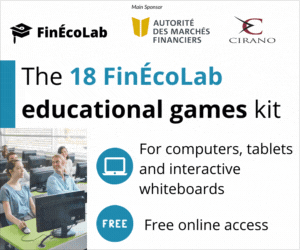Thanks to a generous investment from TECTERRA Inc., aspiring Survey and Geospatial Engineering Technologists will have access to more financial support and enhanced programming at NAIT to pursue rewarding career opportunities. The $1.4 million donation will fund student awards, equipment upgrades, work-integrated learning (WIL) opportunities, and youth and industry engagement activities.
"Our aim is to fuel the industry's growth by nurturing the talents of young minds, fostering innovation, and bridging academia with industry," says Monty Carter, TECTERRA's chair and managing director. "By investing in geomatics related post-secondary students, we are investing in the future of the industry."
From building people's homes to expanding power and utilities in municipalities, the daily work performed by skilled technicians in geomatics, land surveying and mapping is a critical component to develop the infrastructure Albertans need.
"Surveying and geospatial engineering technologists are the foundation of all construction projects," says Dennis Sheppard, interim dean, School of Applied Sciences and Technology. "Those skilled people are turning our world from highly detailed data about our environment to develop into the homes, offices, buildings, resources and industries that are critical to where we work and live today."
Currently, there's high demand for skilled workers in land surveying, geomatics and mapping. NAIT's graduates alone report a 100% employment rate within 6 months of completing the program. However, demand is outpacing enrolments in post-secondary programming. According to Alberta's Land Surveyors' Association, around 1,700 new technicians are needed by 2033.
"NAIT, amongst others, is well positioned to fuel the industry with new grads," says Carter. "Our industry is evolving and transitioning, and we are thrilled to support education in Alberta in these fields."
Bridging the gap between industry and students
NAIT's partnership with TECTERRA will help to ensure the construction industry has the skilled people needed to meet the increasing demand to grow for the future. But that all starts with getting those students in the door.
Student bursary affirms student's career path
Marc Schroter, a 2023 graduate of NAIT's Surveying and Geospatial Engineering Technology program received the TECTERRA Bursary in his final year of studies at NAIT. That solidified his decision to move to B.C. to pursue a degree in geomatics.
"I was grateful when I received the TECTERRA Bursary. The financial support influenced my decision to continue my education," says Schroter. "I knew then that I was headed in the right direction."
Schroter is on track to graduate with a degree from BCIT next year; after that, he plans on working in his profession over the next five years articling to become an Alberta Land Surveyor. Land surveyors measure and interpret boundaries, buildings and other structures on the earth, below or above to help with planning and developing land - skills and experience that are in demand by industry.
TECTERRA's investment will help attract youth and those interested in careers related to science, technology, engineering and math, by increasing their awareness about the program and the various career opportunities available.
"We need to bridge the gap on both sides. We must ensure that youth consider this as a highly rewarding and viable career path and to appreciate that it plays a significant role in the construction industry," says Sheppard.
To that end, a part of TECTERRA's gift will enable NAIT to engage youth from high schools to tour the polytechnic's facilities and learn more about the program.
On June 5, the first of such visits occurred with nearly 30 grade 11 and 12 students from Spruce Grove Composite High School visited NAIT campus and participated in surveying exercises. These exercises included geocaching and learning on global positioning systems (GPS) equipment to provide location information and using some of the newest 3D laser scanners.
Technology is critical to students' learning. For instance, GPS is used to find the exact location of land and landmarks, while GIS is used to record and visualize that location data. The program is using funding from TECTERRA to purchase new GPS equipment to keep NAIT's programs aligned with leading-edge technology being adopted in the industry. In the next year, students in the two-year program will be able to learn on the Trimble GPS model, which includes licenses to software for students to view and analyze all data collected.
The program also plans to hold industry engagement sessions in 2025, as well as implement work-integrated learning starting in 2026.
"We appreciate our partnership with TECTERRA," says Sheppard. "Their support makes it possible to provide the tools and technology for students to become top tier graduates - and elevate industry as a whole."
Established in 2009, non-profit organization TECTERRA operates under a unique funding model that has invested over $32 million to support hundreds of Canadian startups and small and medium-sized enterprises by providing financial backing and resources for geospatial technology. Today, TECTERRA leverages the returns from these investments to support geospatial initiatives at academic institutions.













